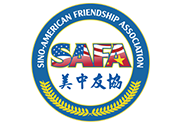From the Times Square Alliance:
New York in 1904 was a city on the verge of tremendous changes – and, not surprisingly, many of those changes had their genesis in the bustling energy and thronged streets of Times Square. Two innovations that would completely transform the Crossroads of the World debuted in 1904: the opening of the city’s first subway line, and the first-ever celebration of New Year’s Eve in Times Square.
This inaugural bash commemorated the official opening of the new headquarters of The New York Times. The newspaper’s owner, German Jewish immigrant Alfred Ochs, had successfully lobbied the city to rename Longacre Square, the district surrounding his paper’s new home, in honor of the famous publication (a contemporary article in The New York Times credited Interborough Rapid Transit Company President August Belmont for suggesting the change to the Rapid Transit Commission). The impressive Times Tower, marooned on a tiny triangle of land at the intersection of 7th Avenue, Broadway and 42nd Street, was at the time Manhattan’s second-tallest building — the tallest if measured from the bottom of its four massive sub-basements, built to handle the heavy weight demands ofThe Times‘ up-to-date printing equipment.


The building was the focus of an unprecedented New Year’s Eve celebration. Ochs spared no expense to ensure a party for the ages. An all-day street festival culminated in a fireworks display set off from the base of the tower, and at midnight the joyful sound of cheering, rattles and noisemakers from the over 200,000 attendees could be heard, it was said, from as far away as Croton-on-Hudson, thirty miles north along the Hudson River.
The New York Times‘ description of the occasion paints a rapturous picture: “From base to dome the giant structure was alight – a torch to usher in the newborn year…”
The night was such a rousing success that Times Square instantly replaced Lower Manhattan’s Trinity Church as “the” place in New York City to ring in the new year. Before long, this party of parties would capture the imagination of the nation, and the world.
Two years later, the city banned the fireworks display – but Ochs was undaunted. He arranged to have a large, illuminated seven-hundred-pound iron and wood ball lowered from the tower flagpole precisely at midnight to signal the end of 1907 and the beginning of 1908.
On that occassion, and for almost a century thereafter, Times Square signmaker Artkraft Strauss was responsible for the ball-lowering. (For more information on the past and present of the New Year’s Eve Ball itself, please click here.) In 1914, The New York Times outgrew Times Tower and relocated to 229 West 43rd Street. By then, New Year’s Eve in Times Square was already a permanent part of our cultural fabric.




